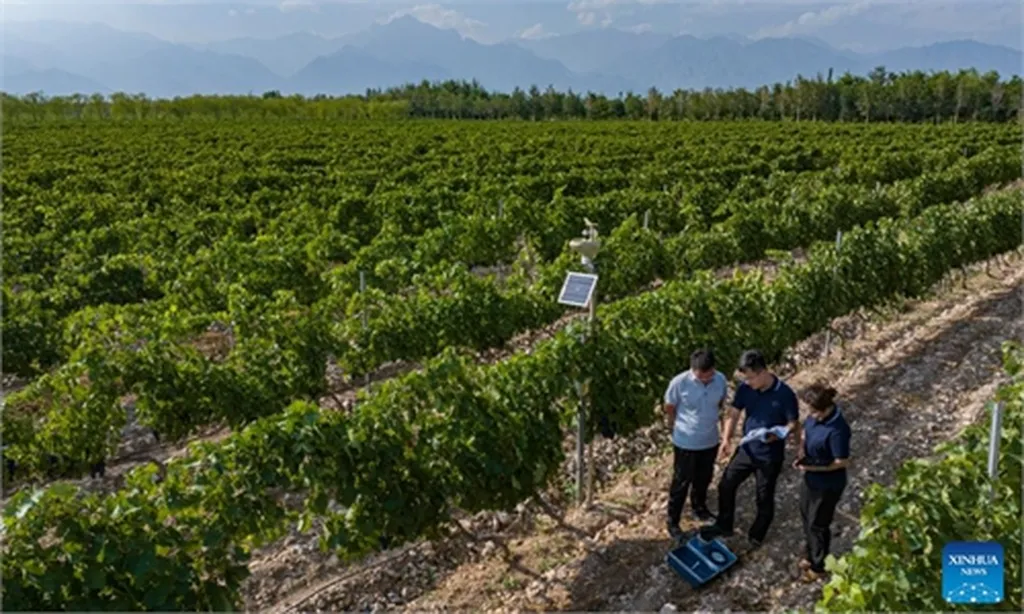In the heart of China’s agricultural research landscape, a groundbreaking study led by Jiawei Wang from the National Key Laboratory of Efficient Utilization of Agricultural Water Resources at the Chinese Academy of Agricultural Sciences has shed new light on the intricate dance between water management and wine grape production. Published in the esteemed journal *Agricultural Water Management* (translated as *Agricultural Water Management*), this meta-analysis of 1228 datasets from 64 publications is poised to reshape the way viticulturists approach irrigation, with significant implications for the wine industry’s bottom line.
The study, a comprehensive synthesis of field trials from both rainfed and irrigated vineyards, reveals that the effects of water supply on wine grape yield and quality are far from one-size-fits-all. Instead, they are intricately intertwined with factors such as vine age, planting density, and grape variety. “The key takeaway is that optimized irrigation management must consider these factors to achieve a balance between water savings and wine quality preservation,” Wang emphasizes.
The research highlights that moderate water stress can significantly enhance water productivity (WP) and fruit quality. In irrigated vineyards, a water input ranging from 400 to 500 mm strikes the optimal balance between WP and quality. The timing of water stress also plays a crucial role: stress before fruit setting has minimal impact on yield, while stress during berry ripening improves grape quality.
Vine age emerges as a significant factor, with vines aged 6–12 years showing superior WP and yield performance. Younger vines, aged 1–5 years, are more responsive to quality enhancement. Planting density effects vary regionally: in irrigated vineyards, a medium density of 3000–4000 plants per hectare performs best, while in rainfed vineyards, a lower density of 1000–2000 plants per hectare ensures more stable yield and quality.
The study also underscores the differences among grape varieties. Red grapes are more sensitive to water deficit in terms of yield and WP, whereas white grapes are more sensitive in terms of quality. This nuanced understanding is crucial for viticulturists aiming to maximize both yield and quality.
The commercial implications of this research are substantial. By tailoring irrigation strategies to specific vineyard conditions, wine producers can enhance water productivity, improve fruit quality, and ultimately, boost their bottom line. As the wine industry grapples with increasing water scarcity and climate variability, this research offers a roadmap for more sustainable and profitable viticulture.
Looking ahead, this study is expected to shape future developments in precision viticulture. By integrating these findings into irrigation management practices, the wine industry can achieve a delicate balance between water conservation and quality preservation. As Wang notes, “The future of viticulture lies in precision management, where every drop of water is used wisely to nurture the vines and produce the finest grapes.”
In the ever-evolving landscape of agricultural technology, this research stands as a testament to the power of data-driven insights. As the wine industry continues to navigate the challenges of a changing climate, the findings from this study will undoubtedly play a pivotal role in shaping the future of viticulture.

